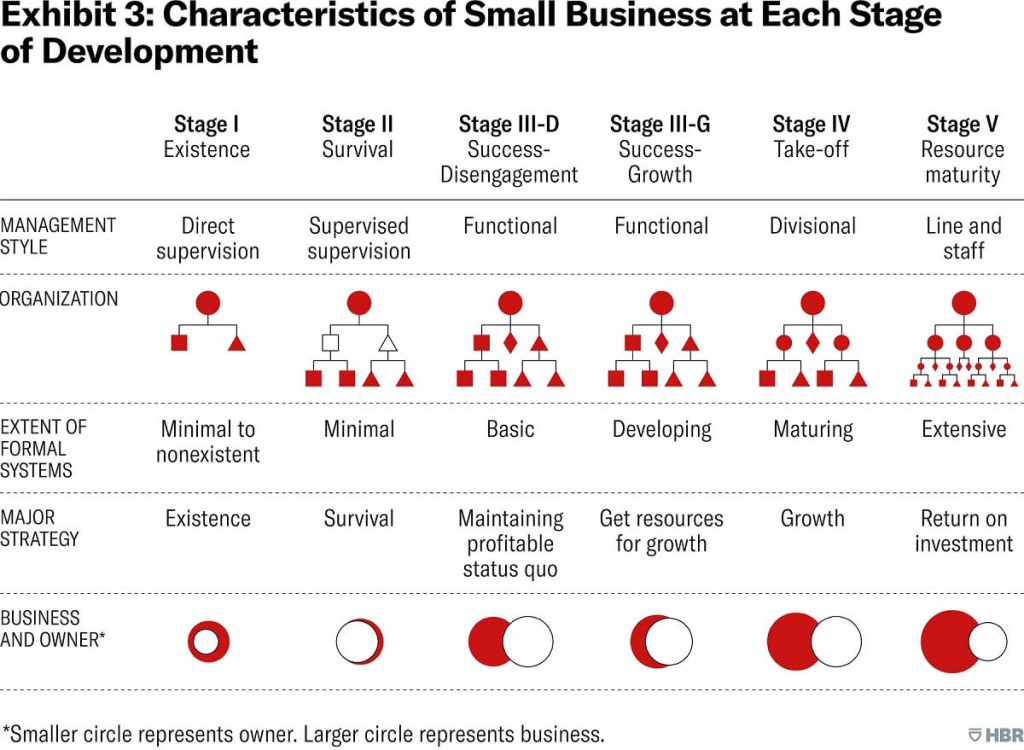How to Grow Your Small Business: 7 Strategies, Tips, and Insights
Grow Your Small Business is crucial for various reasons, as it contributes to both the business’s sustainability and the broader economy. Here’s a brief overview of the importance of growing a small business:
- Economic Impact: Small businesses play a significant role in economic development. When these businesses grow, they create job opportunities, stimulate local economies, and contribute to overall economic prosperity.
- Job Creation: Small businesses are often major sources of employment. As they expand, they hire more employees, reducing unemployment rates and providing individuals with livelihoods. Job creation, in turn, enhances the quality of life within a community.
- Innovation: Small businesses are often more agile and flexible, fostering innovation. As they grow, they can invest in research and development, leading to the creation of new products, services, and solutions. This innovation not only helps the business but also drives progress in various industries.
- Diversification of the Economy: A diverse economy is more resilient to economic downturns. When small businesses grow, they bring diversity to the market, reducing dependence on a few large corporations and making the economy more robust.
- Community Development: Small businesses are integral parts of local communities. Their growth can lead to improved infrastructure, better services, and an overall enhancement of the community’s well-being. Small businesses often support local causes and contribute to the social fabric.
- Entrepreneurship and Creativity: Small businesses are often founded by entrepreneurs with innovative ideas. As these businesses grow, they inspire others to take risks and start their ventures, fostering a culture of entrepreneurship and creativity.
- Competitive Advantage: By growing, small businesses can achieve economies of scale, allowing them to compete more effectively with larger enterprises. This growth may enable them to negotiate better deals with suppliers, offer competitive pricing, and invest in marketing to reach a broader customer base.
- Long-Term Viability: Sustainable growth ensures the long-term viability of a small business. It allows for the development of efficient operational processes, improved financial stability, and the ability to weather economic challenges.
- Access to Resources: Growth often provides small businesses with increased access to financial resources, technology, and talent. This, in turn, enables them to invest in further expansion and stay competitive in the market.
- Global Opportunities: Growing a small business may open doors to global markets. With increased capacity, businesses can explore international opportunities, expanding their customer base and diversifying revenue streams.
The growth of small businesses is vital for economic development, job creation, innovation, and community well-being. It contributes to a dynamic and resilient economy while fostering a culture of entrepreneurship and creativity.
Table of Contents
7 Strategies to Grow Your Small Business
Growing a small business requires a combination of strategic planning, effective execution, and adaptability. Here are seven strategies to help you grow your small business:
- Market Research and Target Audience Understanding:
- Conduct thorough market research to understand your industry, competitors, and customer needs.
- Identify your target audience and tailor your products or services to meet their specific needs and preferences.
- Stay updated on industry trends and market demands to adapt your offerings accordingly.
- Digital Marketing and Online Presence:
- Establish a strong online presence through a user-friendly website and active engagement on social media platforms.
- Implement a digital marketing strategy that includes SEO, content marketing, email campaigns, and social media advertising to reach a wider audience.
- Utilize analytics tools to measure the effectiveness of your online efforts and make data-driven decisions.
- Customer Relationship Management (CRM):
- Prioritize customer satisfaction and build strong relationships with your existing customer base.
- Implement a CRM system to organize customer data, track interactions, and personalize your communication.
- Encourage customer feedback and use it to improve your products, services, and overall customer experience.
- Strategic Partnerships and Networking:
- Explore strategic partnerships with other businesses that complement your products or services.
- Attend industry events, join professional organizations, and actively network to build relationships with other entrepreneurs and potential clients.
- Collaborate with influencers or thought leaders in your industry to expand your reach and credibility.
- Diversification and Innovation:
- Diversify your product or service offerings to appeal to a broader audience and minimize risks associated with relying on a single revenue stream.
- Foster a culture of innovation within your business, encouraging employees to contribute ideas and stay abreast of industry advancements.
- Regularly update and improve your offerings to meet changing customer needs and stay competitive in the market.
- Financial Management and Funding:
- Maintain a solid financial management strategy to ensure your business is financially stable and can support growth.
- Explore various funding options, such as loans, grants, or investments, to secure the capital needed for expansion.
- Monitor key financial metrics and adjust your budget and spending based on your growth goals.
- Employee Training and Development:
- Invest in the training and development of your employees to enhance their skills and increase overall productivity.
- Foster a positive workplace culture that encourages collaboration, creativity, and a sense of ownership among your team.
- As your business grows, ensure that you have the right talent in place to manage increased responsibilities and workload.
Implementing these strategies requires careful planning and adaptability to the changing business landscape. Regularly reassess your goals and adjust your strategies accordingly to ensure sustained and scalable growth.
What is Small Business Growth?
Small business growth refers to the process of expanding and increasing the scale, scope, or capacity of a small business over time. It involves a deliberate and strategic effort to enhance various aspects of the business, enabling it to operate more efficiently, reach a broader audience, and achieve higher levels of success. Small business growth can manifest in different forms, including increased revenue, customer base, market share, and geographical presence.
Key components of small business growth include:
- Financial Expansion: A growing small business often experiences an increase in revenue and profitability. This may result from capturing a larger market share, introducing new products or services, or improving operational efficiency.
- Customer Base Expansion: Growing businesses attract and retain a larger customer base. This can be achieved through effective marketing strategies, superior customer service, and the development of products or services that meet the evolving needs of consumers.
- Market Expansion: Small businesses may grow by entering new geographical markets, whether locally, nationally, or internationally. This expansion can involve opening new physical locations, reaching customers through e-commerce, or targeting new demographic segments.
- Product or Service Diversification: Businesses can achieve growth by diversifying their product or service offerings. Introducing new products or expanding into related areas allows a small business to cater to a broader range of customer needs and preferences.
- Operational Efficiency: Improving operational efficiency is a critical aspect of growth. This may involve streamlining internal processes, adopting new technologies, and optimizing the use of resources to increase productivity and reduce costs.
- Strategic Partnerships and Alliances: Collaborating with other businesses through strategic partnerships can facilitate growth. Joint ventures, alliances, or collaborations with complementary businesses can provide access to new resources, markets, and expertise.
- Brand Building and Recognition: Growing businesses often focus on building a strong brand presence. Establishing a positive reputation, effective branding, and marketing efforts contribute to increased brand recognition, trust, and loyalty among customers.
- Employee Development and Capacity Building: As a business expands, so do its demands on human resources. Providing training and development opportunities for employees ensures that the workforce is equipped to handle increased responsibilities and contribute to the company’s growth.
It’s important to note that small business growth is not solely measured by financial metrics but also by the ability to adapt to changing market conditions, capitalize on opportunities, and sustain expansion over the long term. Successful growth requires careful planning, strategic decision-making, and a commitment to ongoing improvement and innovation.

Common Challenges Small Businesses Face During Growth
While growth is a positive goal for small businesses, it often comes with a set of challenges that owners and managers must navigate. Common challenges faced by small businesses during the growth phase include:
- Financial Constraints:
- Managing cash flow becomes more complex as operational costs, inventory, and receivables increase.
- Securing additional funding or loans to support expansion can be challenging, especially for businesses with limited credit history.
- Operational Issues:
- Scaling operations can strain existing systems and processes, leading to inefficiencies.
- Maintaining consistent product or service quality may become challenging during rapid growth.
- Talent Acquisition and Retention:
- Finding and retaining skilled employees becomes crucial as the demand for workforce increases.
- Competition with larger companies for top talent may pose challenges, and the company culture might evolve as new employees join.
- Market Saturation and Competition:
- Entering new markets or expanding existing ones can be met with increased competition.
- Saturation in certain markets may make it difficult to differentiate products or services.
- Technology Integration:
- Adopting new technologies to support growth can be challenging and may require significant investment.
- Ensuring seamless integration of technology systems is crucial to avoid disruptions in operations.
- Customer Service Challenges:
- Maintaining the same level of personalized customer service becomes challenging as the customer base expands.
- Ensuring customer satisfaction and loyalty amid growth can be a delicate balancing act.
- Regulatory Compliance:
- Navigating and complying with regulatory requirements becomes more complex with growth, especially when entering new markets or industries.
- Keeping up with changes in laws and regulations can be time-consuming.
- Risk Management:
- Growing businesses face increased exposure to various risks, such as financial, operational, and reputational risks.
- Implementing effective risk management strategies becomes essential to safeguard the business.
- Strategic Planning and Execution:
- Developing and executing a clear growth strategy is essential, and businesses may struggle with strategic planning.
- Balancing short-term goals with long-term objectives can be challenging during periods of rapid growth.
- Cultural Shift:
- As the business grows, the company culture may evolve, and maintaining the original entrepreneurial spirit can become challenging.
- Ensuring that employees remain aligned with the company’s values becomes crucial.
- Supply Chain Issues:
- Expanding operations may lead to increased complexity in the supply chain, making it challenging to manage logistics and inventory effectively.
- Global events, such as supply chain disruptions or geopolitical issues, can impact the availability of resources.
Addressing these challenges requires careful planning, flexibility, and the ability to adapt to changing circumstances. Small businesses that successfully navigate these obstacles are better positioned for sustained growth and long-term success.
How to Grow Your Small Business with Marketing?
Growing your small business through effective marketing involves strategic planning, a deep understanding of your target audience, and the utilization of various marketing channels. Here are several strategies to help you grow your small business with marketing:
- Define Your Target Audience:
- Clearly identify and understand your target audience. This will help you tailor your marketing messages and strategies to better resonate with potential customers.

- Create a Strong Online Presence:
- Develop a user-friendly and visually appealing website that reflects your brand.
- Utilize search engine optimization (SEO) techniques to improve your website’s visibility on search engines.
- Leverage social media platforms to engage with your audience and promote your products or services.
- Content Marketing:
- Create valuable and relevant content that addresses the needs and interests of your target audience.
- Blog posts, articles, videos, and infographics can help establish your expertise and attract potential customers.
- Email Marketing:
- Build and maintain an email subscriber list to nurture leads and stay connected with your audience.
- Use personalized and targeted email campaigns to promote new products, share updates, and offer special promotions.
- Social Media Marketing:
- Identify the social media platforms where your target audience is most active.
- Develop a consistent posting schedule and create engaging content to build brand awareness and foster community engagement.
- Paid Advertising:
- Utilize paid advertising channels, such as Google Ads or social media advertising, to increase visibility and reach a wider audience.
- Target specific demographics and use analytics to measure the effectiveness of your ad campaigns.
- Referral and Word-of-Mouth Marketing:
- Encourage satisfied customers to refer your business to their networks.
- Implement referral programs or loyalty programs to incentivize existing customers to bring in new business.
- Collaborate and Partner:
- Explore partnerships with other businesses or influencers that align with your brand.
- Collaborative marketing efforts can help you tap into new audiences and enhance your credibility.
- Optimize your online presence for local search by ensuring accurate business information on platforms like Google My Business.
- Encourage positive customer reviews to boost local credibility.
- Attend Industry Events and Networks:
- Participate in industry events, trade shows, or local community gatherings to network with potential customers and partners.
- Networking provides an opportunity to build relationships and increase brand visibility.
- Measure and Analyze:
- Use analytics tools to track the performance of your marketing efforts.
- Analyze key performance indicators (KPIs) to understand what strategies are working and make data-driven decisions.
- Customer Relationship Management (CRM):
- Implement a CRM system to manage customer interactions and personalize your marketing efforts.
- Understanding your customers’ preferences and behaviors allows for more targeted marketing strategies.
Remember, consistency and adaptability are crucial in marketing. Stay informed about industry trends, monitor the effectiveness of your campaigns, and be willing to adjust your strategies based on the evolving needs of your audience and the market.
Digital Marketing Tactics for Small Businesses
Digital marketing is a powerful tool for small businesses to reach their target audience, build brand awareness, and drive sales. Here are various digital marketing tactics that small businesses can leverage:
- Search Engine Optimization (SEO):
- Optimize your website for search engines to improve its visibility in search results.
- Focus on keyword research, on-page optimization, and building quality backlinks.
- Content Marketing:
- Create high-quality, relevant, and valuable content to attract and engage your target audience.
- Blog posts, articles, videos, infographics, and ebooks can be part of your content strategy.
- Social Media Marketing:
- Choose platforms relevant to your audience and industry (e.g., Facebook, Instagram, Twitter, LinkedIn).
- Share engaging content, interact with your audience, and use paid advertising to reach a wider audience.
- Email Marketing:
- Build and nurture an email subscriber list for direct communication with your audience.
- Use email campaigns for product launches, promotions, newsletters, and personalized content.
- Pay-Per-Click Advertising (PPC):
- Utilize platforms like Google Ads or Bing Ads to create targeted ad campaigns.
- Set a budget, choose relevant keywords, and pay only when users click on your ads.
- Social Media Advertising:
- Run targeted ads on social media platforms to reach specific demographics.
- Use advanced targeting options to maximize the effectiveness of your ad spend.
- Influencer Marketing:
- Collaborate with influencers in your industry to promote your products or services.
- Influencers can help expand your reach and lend credibility to your brand.
- Online Reviews and Reputation Management:
- Encourage satisfied customers to leave positive reviews on review platforms.
- Respond to both positive and negative reviews to show that you value customer feedback.
- Local SEO:
- Optimize your online presence for local search to attract customers in your geographical area.
- Ensure accurate business information on local directories, Google My Business, and other platforms.
- Video Marketing:
- Create and share videos to convey your brand message, demonstrate products, or share industry insights.
- Platforms like YouTube, Instagram, and TikTok are popular for video content.
- Webinars and Virtual Events:
- Host webinars or virtual events to showcase your expertise and engage with your audience.
- Use these platforms to launch new products or provide educational content.
- Mobile Optimization:
- Ensure that your website is mobile-friendly, as a significant portion of internet users access content on mobile devices.
- Optimize your emails and ads for mobile users to enhance the user experience.
- Chatbots and Live Chat:
- Implement chatbots on your website or use live chat to engage with visitors and address their queries.
- Automated chat support can enhance customer service and improve user experience.
- Analytics and Data Monitoring:
- Use analytics tools to track the performance of your digital marketing efforts.
- Analyze data to make informed decisions and optimize your strategies over time.
Selecting the right combination of these tactics depends on your business goals, target audience, and industry. Regularly evaluate the performance of your digital marketing efforts and be prepared to adapt your strategies based on the evolving needs of your audience and changes in the digital landscape.
Recommended Books on Growing Your Small Business
There are numerous books that provide valuable insights and strategies for growing a small business. Here are some recommended books on this topic:
- “Built to Sell: Creating a Business That Can Thrive Without You” by John Warrillow:
- This book focuses on creating a business with the intention of eventually selling it, emphasizing the importance of scalability and independence.
- “The Lean Startup: How Today’s Entrepreneurs Use Continuous Innovation to Create Radically Successful Businesses” by Eric Ries:
- Eric Ries introduces the Lean Startup methodology, which emphasizes iterative product development, customer feedback, and agility in the pursuit of sustainable growth.
- “Scaling Up: How a Few Companies Make It…and Why the Rest Don’t” by Verne Harnish:
- Verne Harnish provides practical advice for scaling businesses successfully, covering topics such as strategy, execution, people, and cash.
- “Traction: Get a Grip on Your Business” by Gino Wickman:
- Gino Wickman introduces the Entrepreneurial Operating System (EOS) to help businesses gain traction by focusing on the six key components: vision, people, data, issues, process, and traction.
- “The E-Myth Revisited: Why Most Small Businesses Don’t Work and What to Do About It” by Michael E. Gerber:
- Michael Gerber explores the common pitfalls that small business owners face and provides insights into how to build a scalable and successful business.
- “Blue Ocean Strategy: How to Create Uncontested Market Space and Make the Competition Irrelevant” by W. Chan Kim and Renée Mauborgne:
- The authors present a strategy for creating new market space and differentiating your business from competitors, encouraging innovation and growth.
- “Profit First: Transform Your Business from a Cash-Eating Monster to a Money-Making Machine” by Mike Michalowicz:
- Mike Michalowicz introduces a cash management system designed to ensure profitability and financial health for small businesses.
- “Good to Great: Why Some Companies Make the Leap… and Others Don’t” by Jim Collins:
- Jim Collins explores the characteristics that distinguish great companies from their peers, providing insights into sustained success and growth.
- “The Innovator’s Dilemma: When New Technologies Cause Great Firms to Fail” by Clayton M. Christensen:
- Clayton Christensen examines the challenges faced by established companies when disruptive technologies emerge and provides lessons on how businesses can navigate innovation.
- “Crushing It!: How Great Entrepreneurs Build Their Business and Influence-and How You Can, Too” by Gary Vaynerchuk:
- Gary Vaynerchuk shares stories of successful entrepreneurs and provides practical advice on leveraging personal branding and social media for business growth.
Remember, each business is unique, so it’s beneficial to draw insights from various sources and adapt strategies to your specific context. Reading a combination of these books can provide a well-rounded perspective on growing and scaling your small business.


